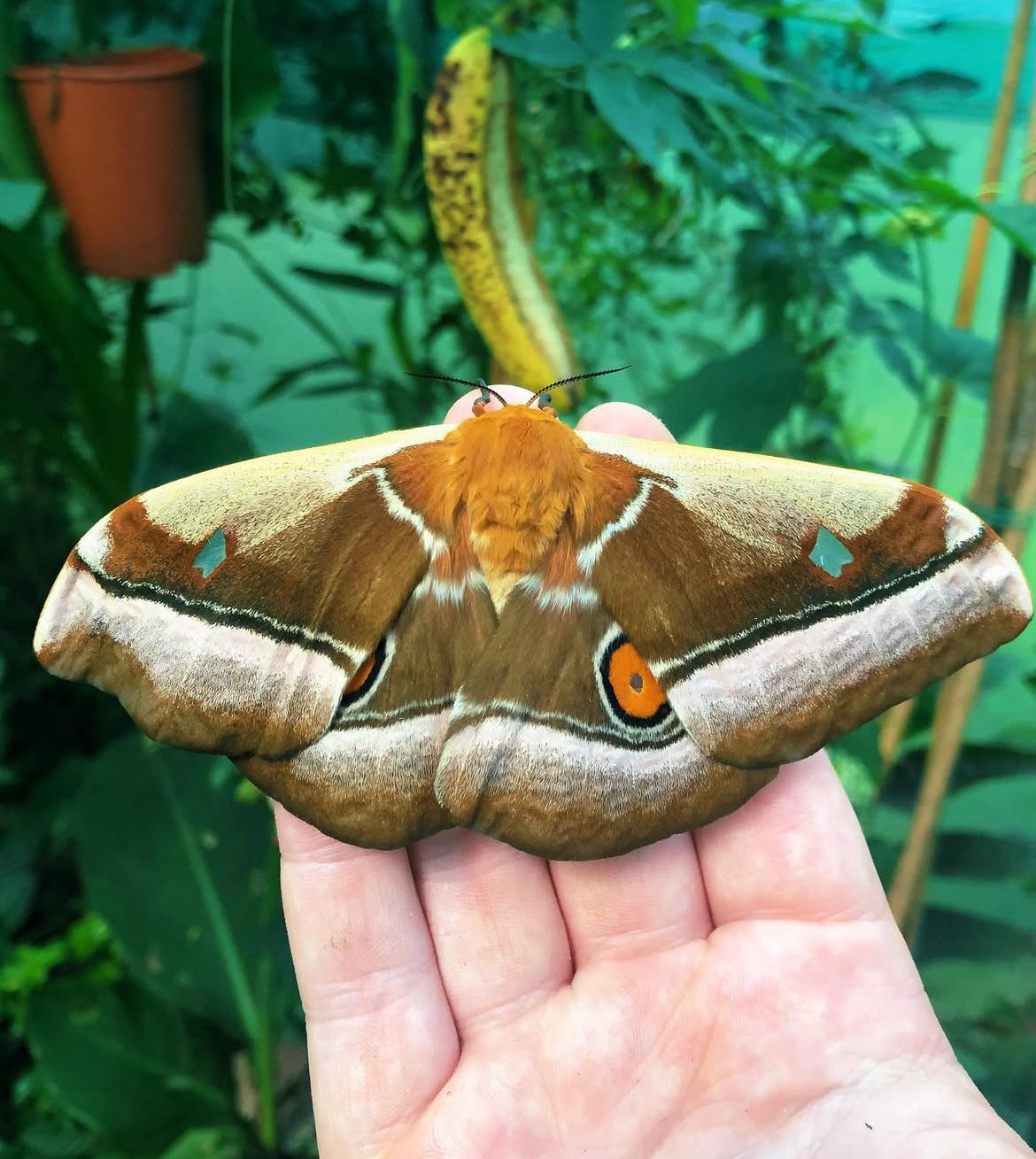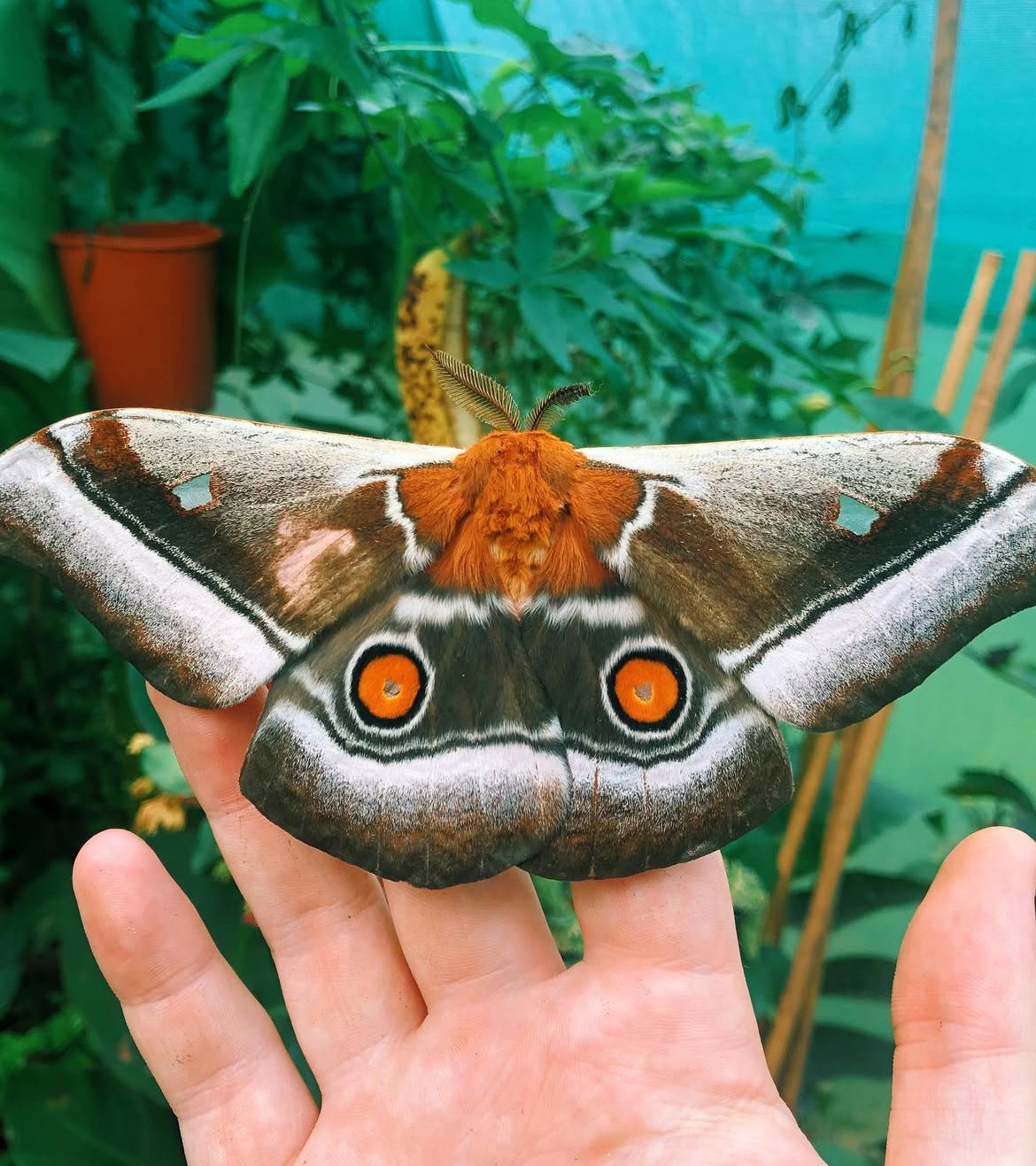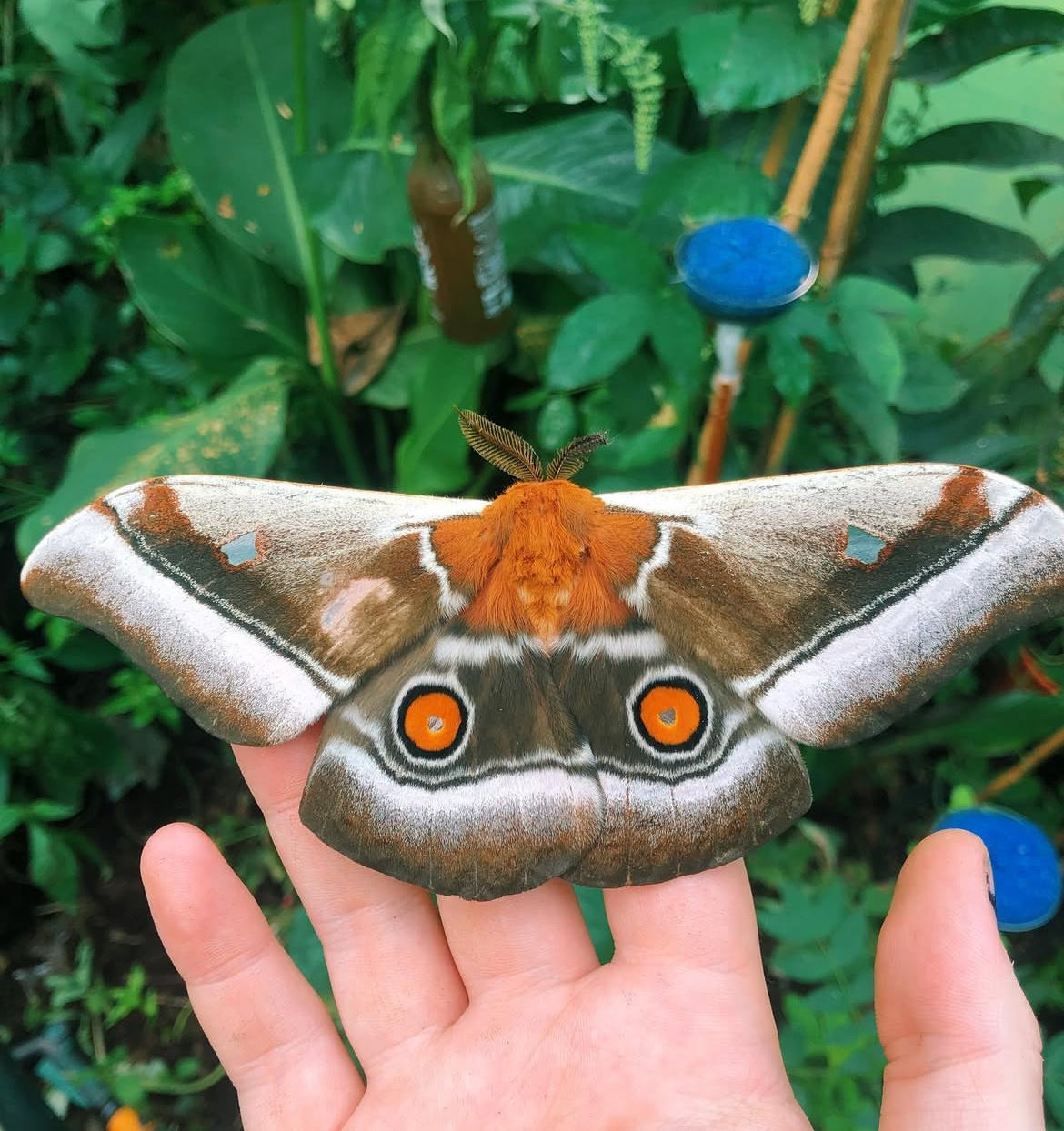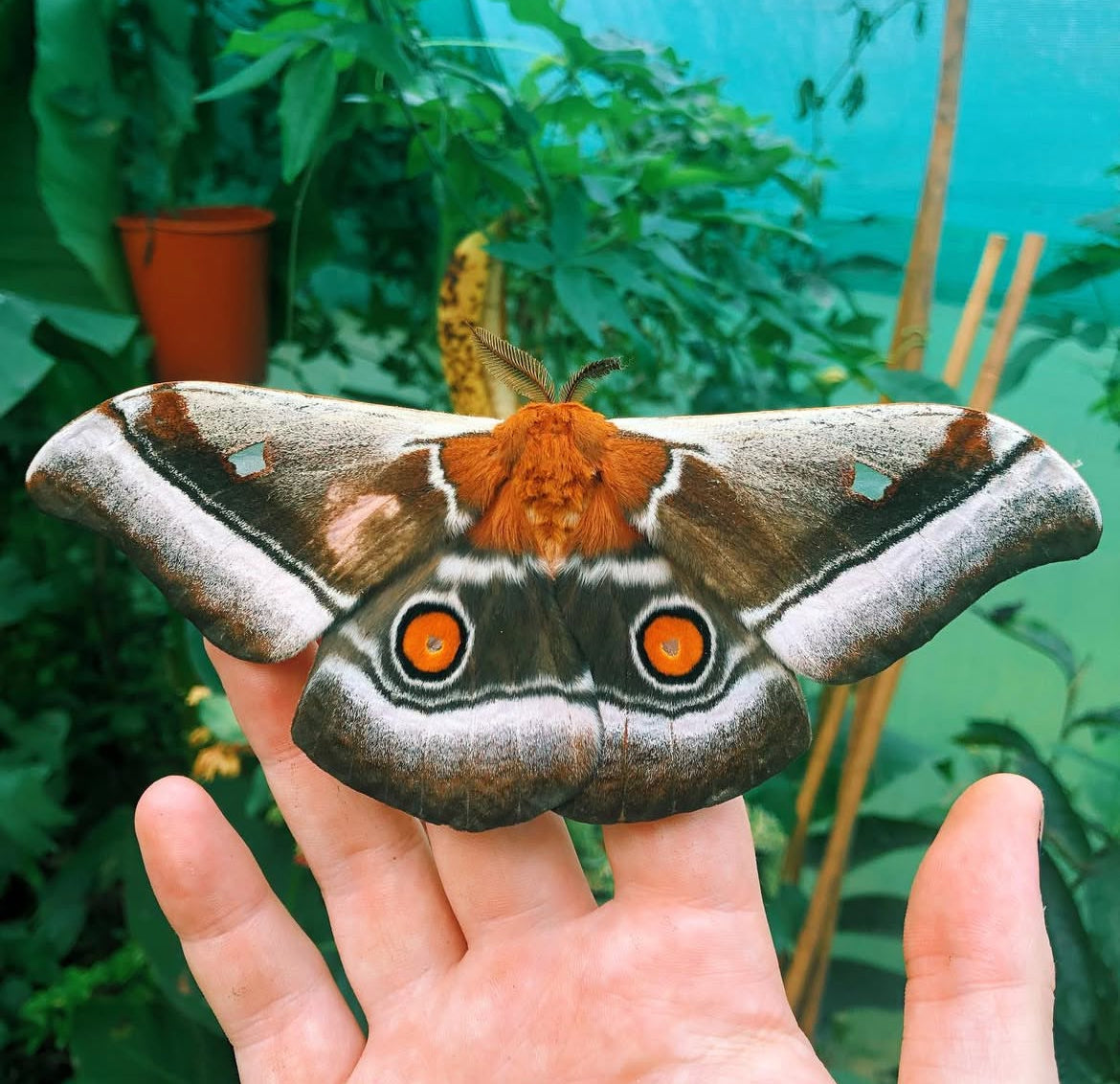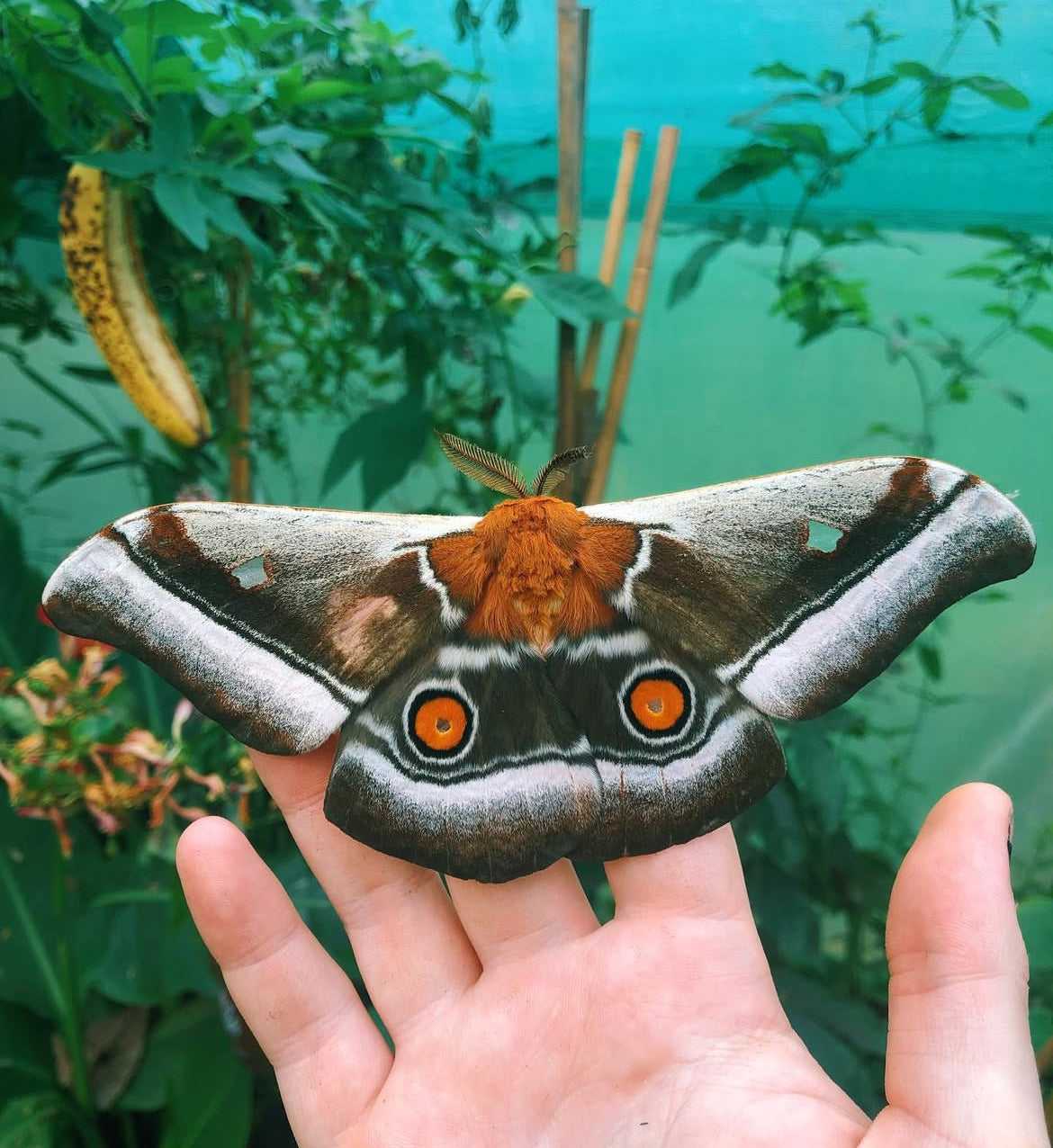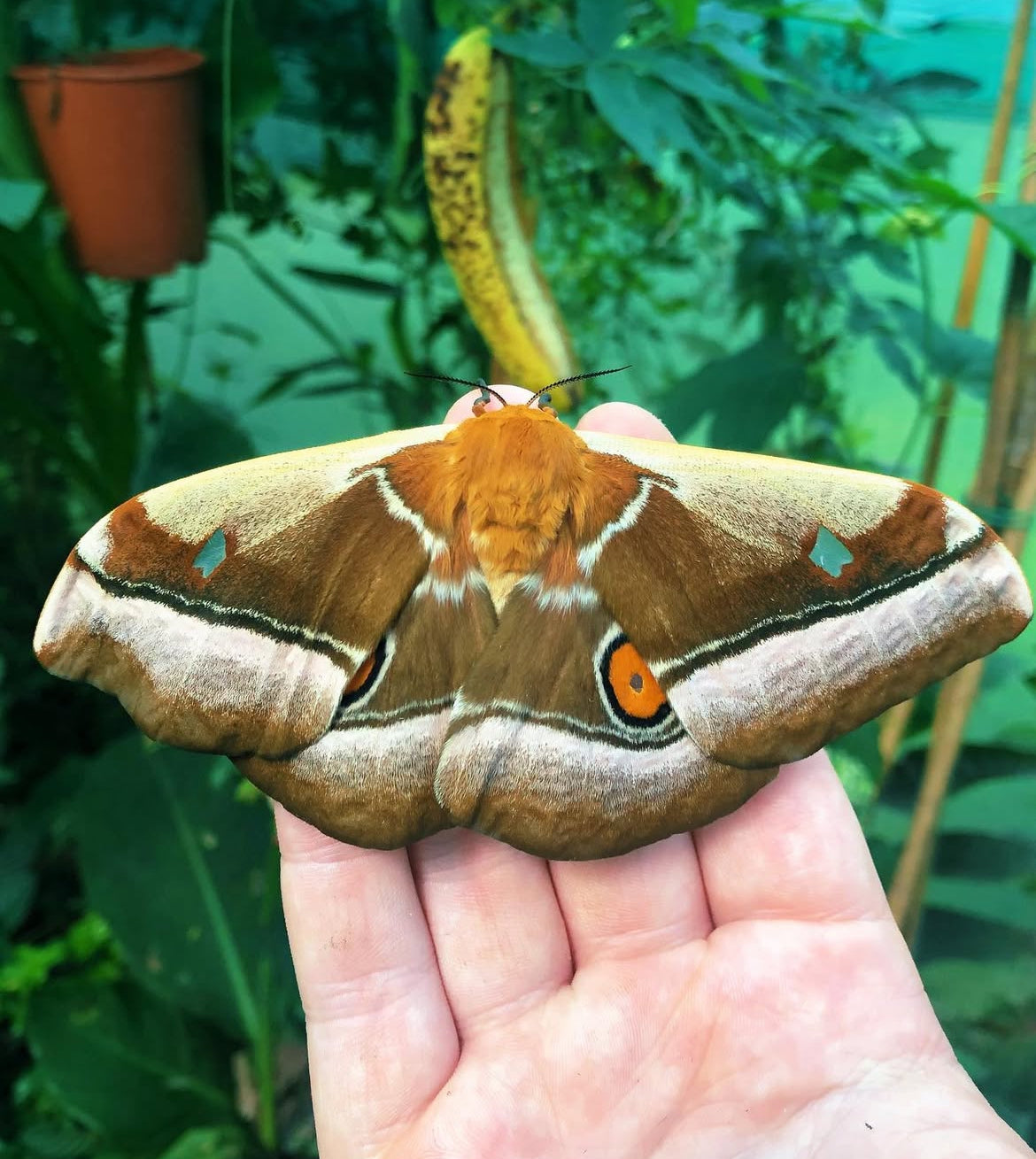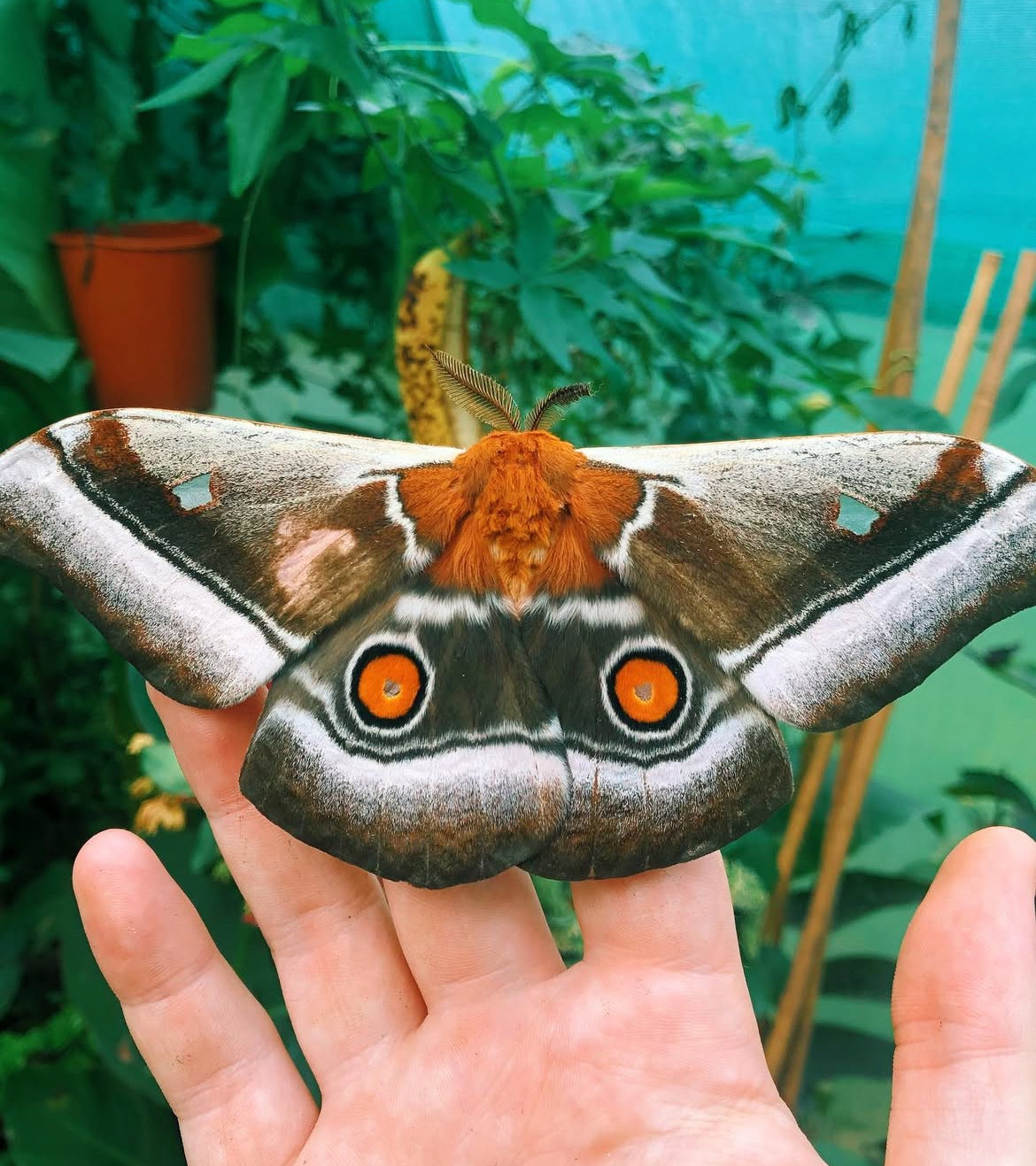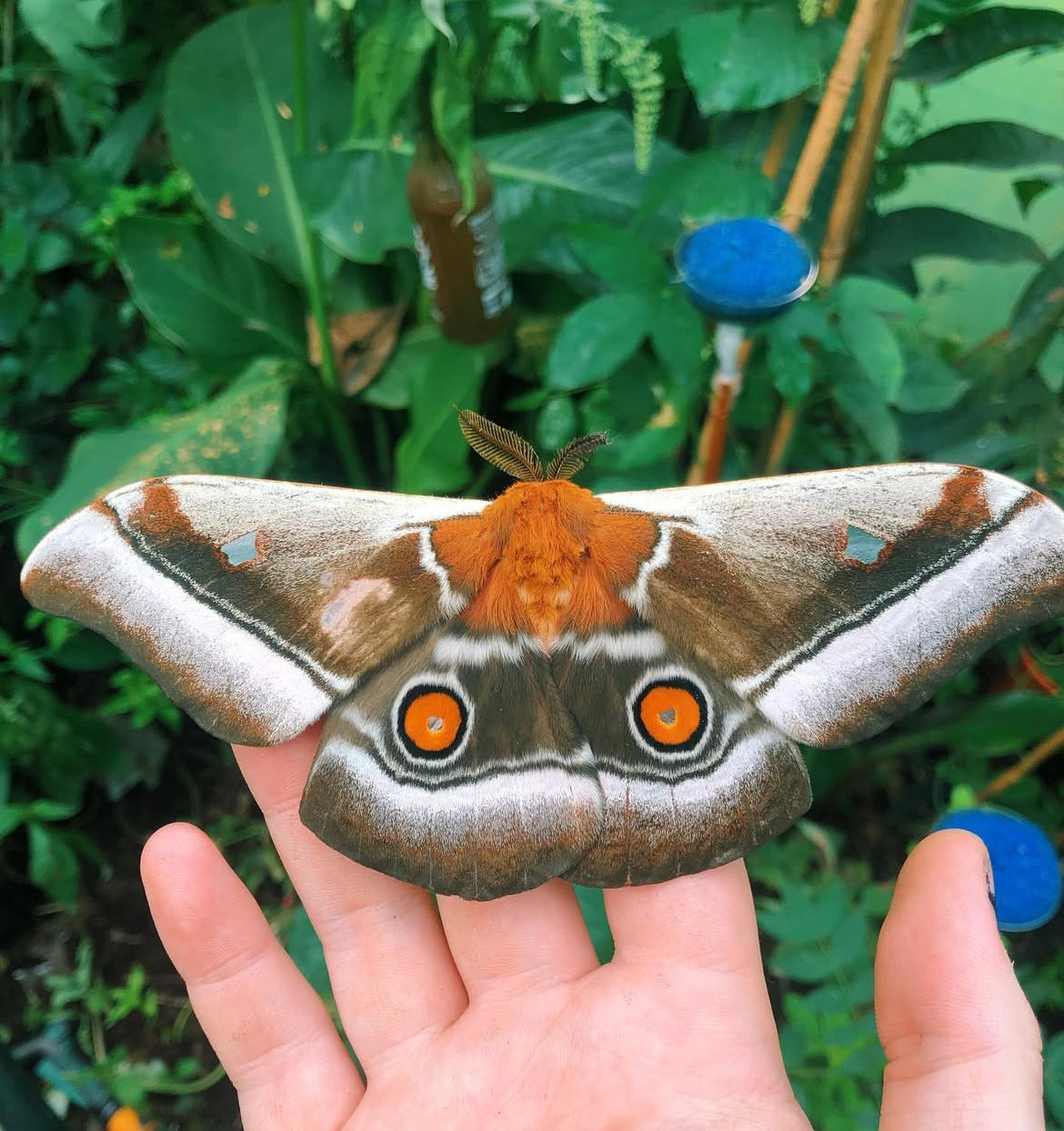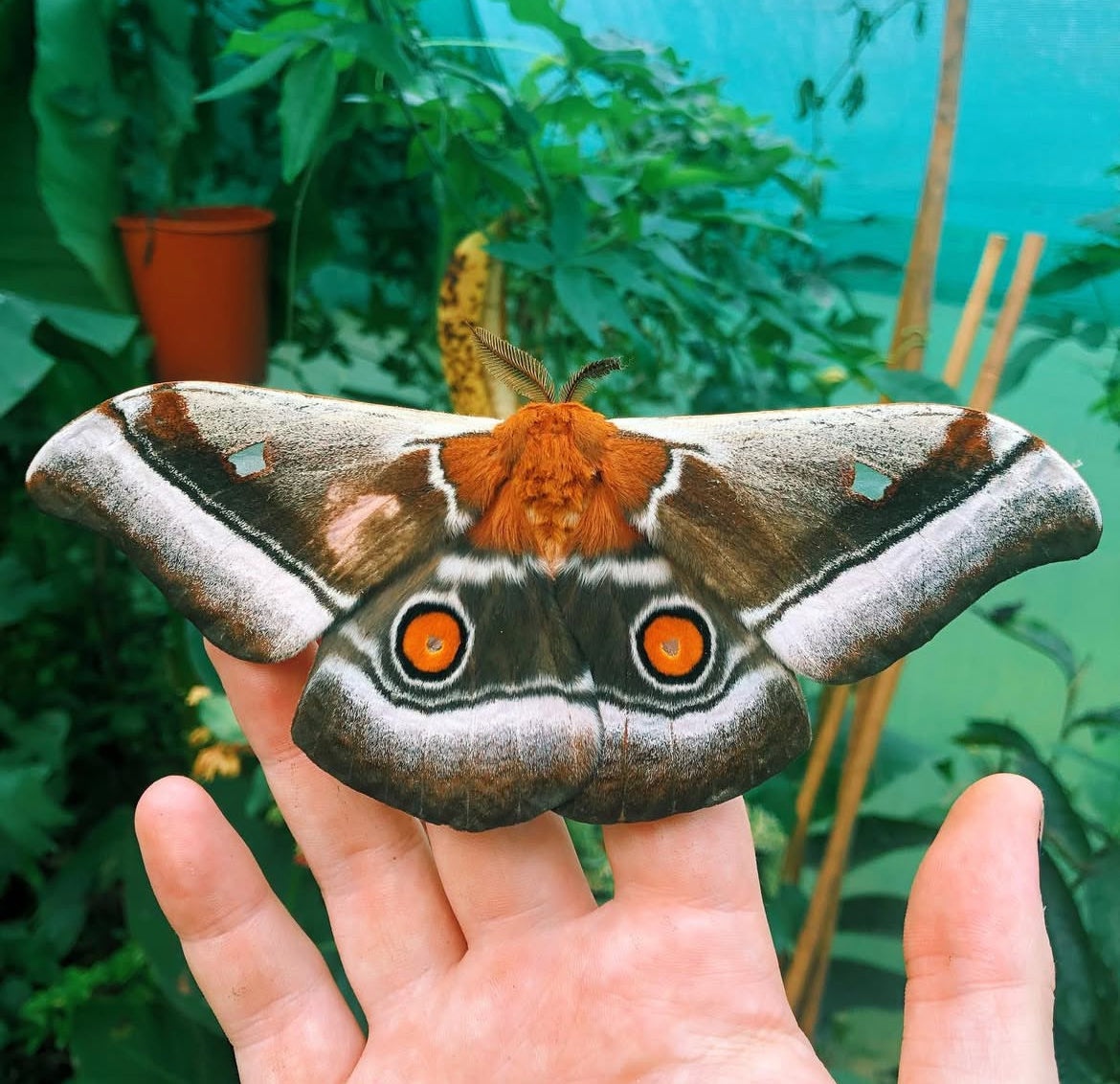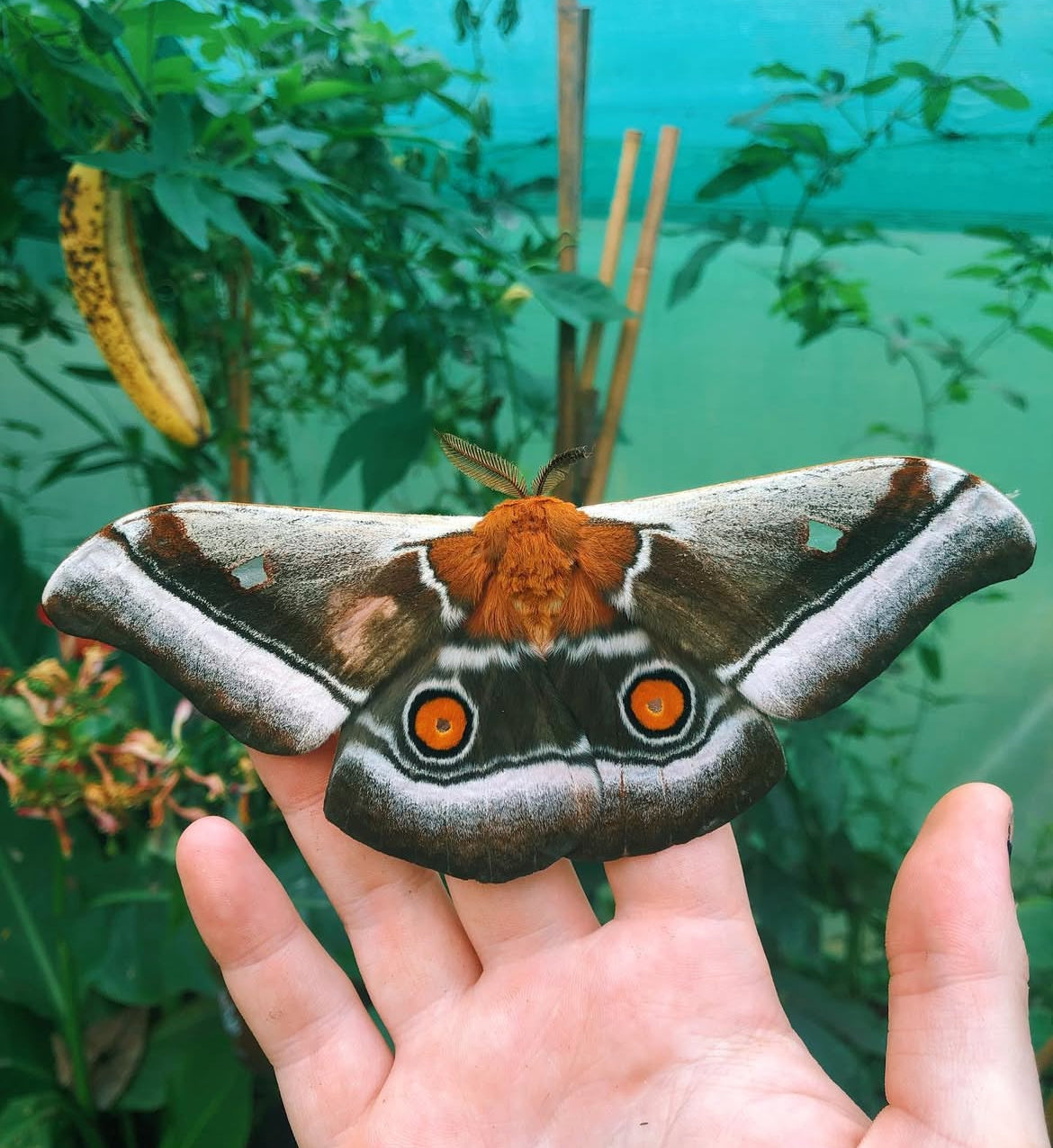Bugs & Butterflies UK
Madagascan Emperor Moth PUPAE (Bunaea aslauga)
Madagascan Emperor Moth PUPAE (Bunaea aslauga)
Couldn't load pickup availability
The next brood of pupae are due to arrive in October.
The Madagascan Emperor moth, Bunaea aslauga (Kirby, 1877), is endemic to the island of Madagascar - though it has features similar to its mainland cousin, Bunaea alcinoe. It is a large moth with wingspans of up to 16cm, and possesses very colourful markings, including bright orange eye-spots on the hindwings, which are flashed when disturbed to startle predators. The moths tend to emerge from their pupae quite predictably around 4-6 weeks after pupation, which occurs underground in the wild, though a substrate like tissue paper works well for captive rearing. Caterpillars are typically easy to rear using host plants like Privet (Ligustrum) and English Ivy (Hedera helix) which are both evergreen, or Sweetgum (Liquiambar) in summer. There are multiple larval forms but they all tend to have a black or red base colour and yellow or white tubercles - quite spectacular! This species is most abundant in the Madagascan rainy season from November to April as both larvae and adults, indicating that it enjoys humidity in all stages, easily achieved with regular misting. Dry conditions will encourage pupae to go into diapause (dormancy).
Difficulty - Straightforward (3/10)
Host plants - Privet (Ligustrum), Sweetgum (Liquidambar) and Ivy (Hedera helix) in captivity.
Conditions - A relatively warm room (22-24 degrees) is ideal for all stages. Pupae require humidity to emerge successfully.
Lifecycle - Continually brooded but pupae tend to diapause during the dry season.
Share
